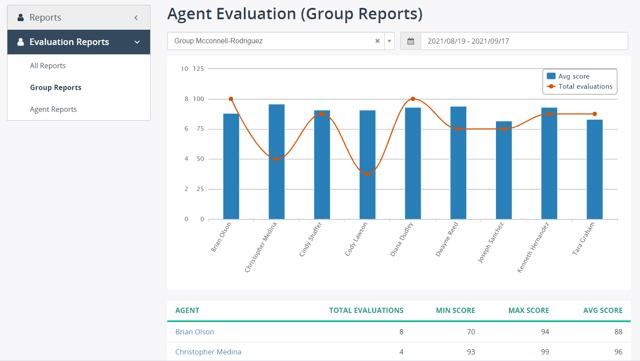3 Contact Center KPIs You Should Be Tracking, But Probably Aren't
Market conditions and customer expectations have drastically changed over the last few years, putting a lot more pressure on contact centers to resolve issues quickly and fully while providing the best possible customer experience.
Therefore, almost all contact centers today are driven by a gamut of key performance indicators (KPIs) such as Average Handle Time (AHT), Average Hold Time, Call Length, First Call Resolution (FCR), Call Abandonment Rate, Transfer Rates, and many others.
But while some of the metrics you are tracking give you good insights into how efficiently your contact center is running and where there is room for improvement, others can feel like useless school reporting for the sake of reporting. Because you are tracking so many metrics, it is important to identify which ones are actually helping you and which aren't.
In addition, there might be KPIs that could significantly help you achieve your goals but aren't being tracked by you yet. In addition, there might be contact center KPIs that could significantly help you achieve your goals but aren't being tracked by you yet. Below, I want to look beyond the obvious candidates and point out a few KPIs that some of our customers have found very useful!
1. Agent Performance Score (Over Time)
Most contact center supervisors listen to a tiny fraction of recorded calls to evaluate their agents' performance. With some luck, they might pick calls that truly represent how quickly the agent is dealing with the problem the customer is experiencing, if the agent is sticking to the call script, and more. But rarely, this gives an accurate picture.

It would be much more accurate to automatically score all their calls based on a predefined list of criteria and have the supervisor revisit some call transcripts to manually evaluate them further. Based on the automatic scoring, the manager not only gets a representative picture (by tracking the minimum, maximum, and average score, as well as the number of evaluations done) but is also made aware of "problem calls" scored outside the agent's usual range.
Last but not least, agent performance scores should also include the customer experience and, therefore, should include a customer-given score. Agent scores should be tracked over time to identify any drops in performance, evaluate the impact training had on their productivity, and more.
2. Number Of Incoming Calls By Topic
Another important metric to track (that most organizations don't yet) is how many calls are received based on the reason for the call. For example, do you know how many of your calls reach your call center every day because of shipping issues, refund requests, broken or non-functional products, etc.?
With MiaRec's Topics feature (part of our Voice Analytics solution), you know exactly why your customers are calling and how it evolves over time. For example, the screenshot below shows the trend analysis of a specific keyword (here we are looking at the opening statement used). We can see how many times this keyword was used overall (60% of the calls), today, and on a daily average.
-1.png?width=640&height=360&name=Screenshots%20(19)-1.png)
This allows you to identify any drops or sudden spikes in customer interest, which enables you to pivot more quickly. You can also identify any potential problems with your product or shipping provider, etc., and quickly intervene before it becomes a bigger problem.
For more information, check out last week's article about the different use cases for topics and call tagging.
3. Call Sentiment
If tracked at all, call sentiment is often determined by the pitch and volume of someone's voice because those are easily quantifiable in the call recording. But what if a customer gets loud not because they are angry but because they are so surprised and happy that your agent resolved the issue instantly? Or what if they become quiet not because they are satisfied but because they know that the problem won't be resolved today (or anytime) easily?
Because we understand how important it is to know what actually is said (and by whom) to determine the call sentiment, we rely on the keywords identified in the call script to identify how the call went. Based on key phrases, you can automatically tag a call as positive (e.g., "Thanks so much!" and "That sounds great!") or as negative (e.g., "What a waste of my time!"). The chart below shows different ways to turn the identified call sentiment into an action item.

These are only three of the many ways you can significantly improve the performance of your contact center but also (maybe even more importantly) on your business operations and even bottom line!
If you want to learn more about how you can use Speech Analytics to your advantage, download our new guide "Customer Satisfaction Through Speech Analytics" or request a demo today.
You May Also Like
These Related Stories
.png)
Conversation Intelligence vs. Voice Analytics And More: What Is Best For You?
-Feb-09-2025-02-16-12-4486-AM.png)
Rethinking Voice of the Customer: Using AI to Measure What Really Matters in CX


